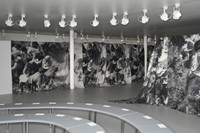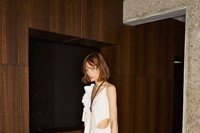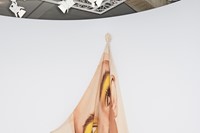The power of craft. That is the big story of Jonathan Anderson’s remarkable revitalisation of Loewe – not so much a brand turnaround as a resurrection. Perhaps that’s slightly unfair – Loewe has existed since 1846, bobbing along the surface of fashion over the past two decades or so. It’s just that none of us knew anything about it, nor paid much attention. What Anderson has done with his communication around and collections for the brand – including this one, for Spring/Summer 2018 – is to craft a heritage for Loewe. He’s pulled ideas from the archive and carefully curated them to create a sense of history the house, to give it a real identity that resonates with contemporary women. It’s a powerful achievement.
This spring show continued to refine and define Anderson’s Loewe, and the house’s woman – that ephemeral notion many labels try to nail down, but which very few succeed to. Anderson’s got her pinned. She’s crafty, or at least she appreciates craft in her clothes. She has a refined taste. She goes to art galleries, and museums. She reads. She dresses well. And she isn’t necessarily young, which feels refreshingly realistic as a viewpoint. The word that leaps to mind, at a Loewe show, is informed – these are informed clothes, for an informed woman. She knows what is going on in her life, and the world around her. She also has her pick of designer houses – and she chooses Loewe.
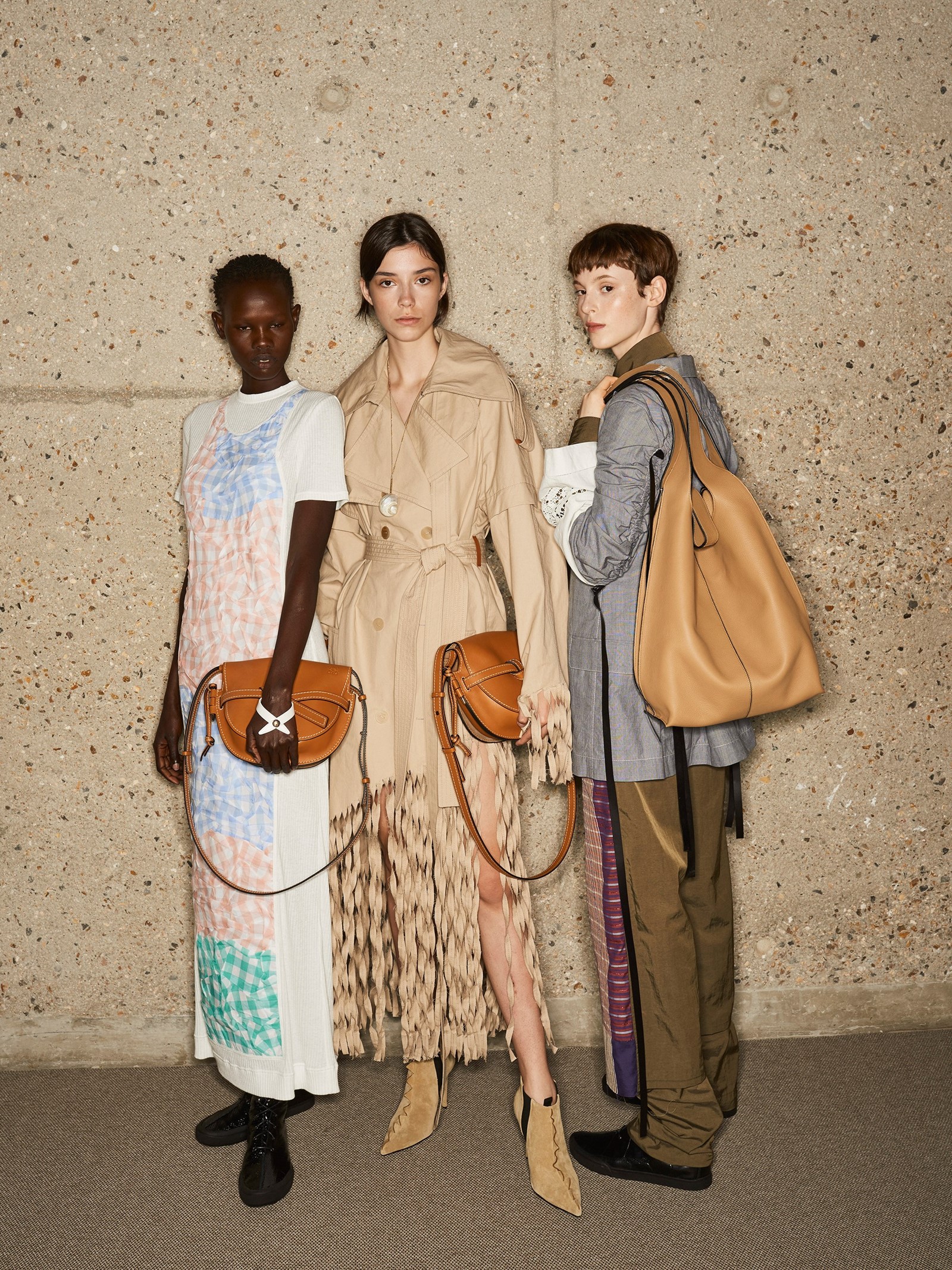
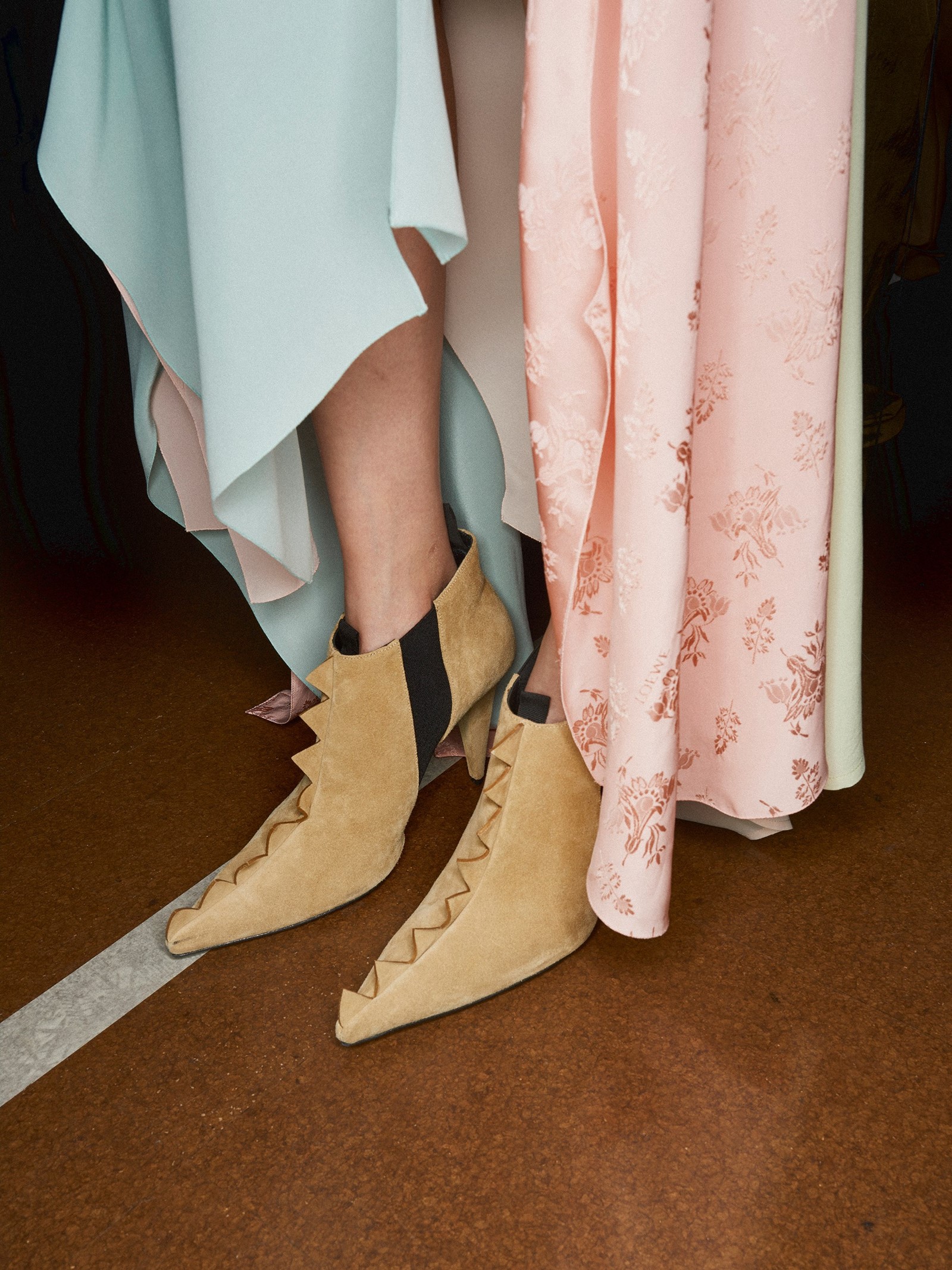
On the walls of the Loewe venue hung a series of tapestries featuring archival images from the last two centuries, as well as shots from Loewe’s forthcoming advertising campaign photographed by Steven Meisel. The images were printed onto threads, then woven digitally into the tapestries in Limoges, a complex process that tied the hyper-modern with the old-world. That’s something Anderson is fixated with at Loewe, fusing the past with the present to create something to last into the future. It was all there, in those dangling swathes of fabric, before a single stitch had been shown.
This collection was also about crafting; avoiding anything twee or homespun, the garments nevertheless vibrated with a true sense of the human hand. They were touching – they evoked touch through techniques which were only possible through the dexterity of handiwork – fringing, macramé, the wizardry of patchwork, and crushing and pushing and crimping and manipulation of fabric. And you wanted to touch everything in turn, to flip it inside-out and examine how it was made. Which, presumably, will make you want to own it. Clever.
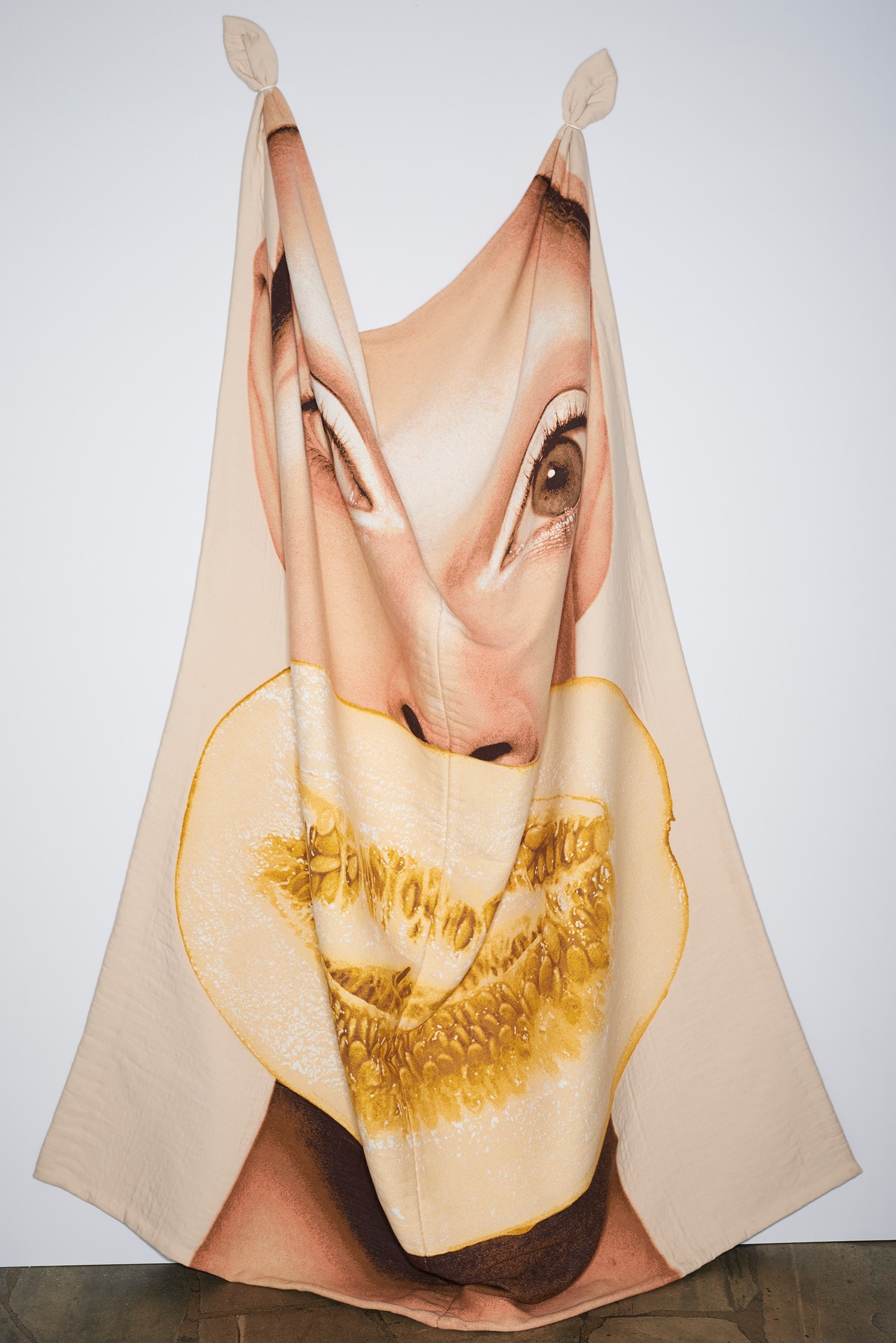
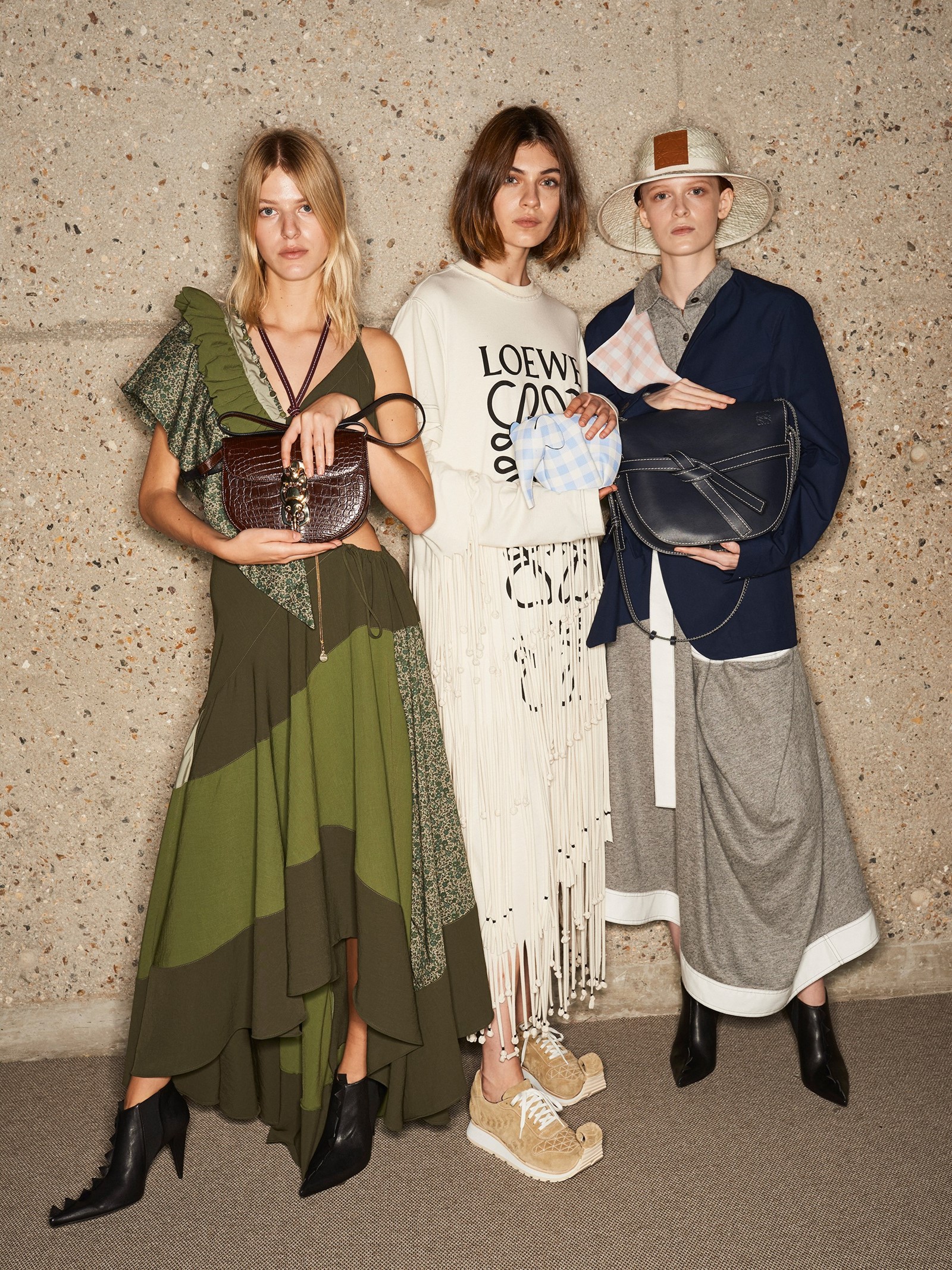
It wasn’t just clever though, it was knowledgeable, which is a different thing. It reminded me of bespoke tailoring, where heat and steam and pressure and human expertise manage to transmogrify a fabric from a flat, woven textile into a three-dimensional form, exploiting natural properties inherent in the material but that require supreme knowledge to unlock. There’s something about Anderson’s work at Loewe that speaks of knowledge, one born from curiosity – he has decided to couch his spectacular reworking of the brand in techniques that other labels are allowing to die out, in an age of mass appeal and mechanical reproduction. Anderson, and Loewe, are instead finding a fresh fusion between tradition and tech. It’s not only creating a modern fashion brand of compelling fortitude; it’s kind of redefining the landscape of contemporary luxury.
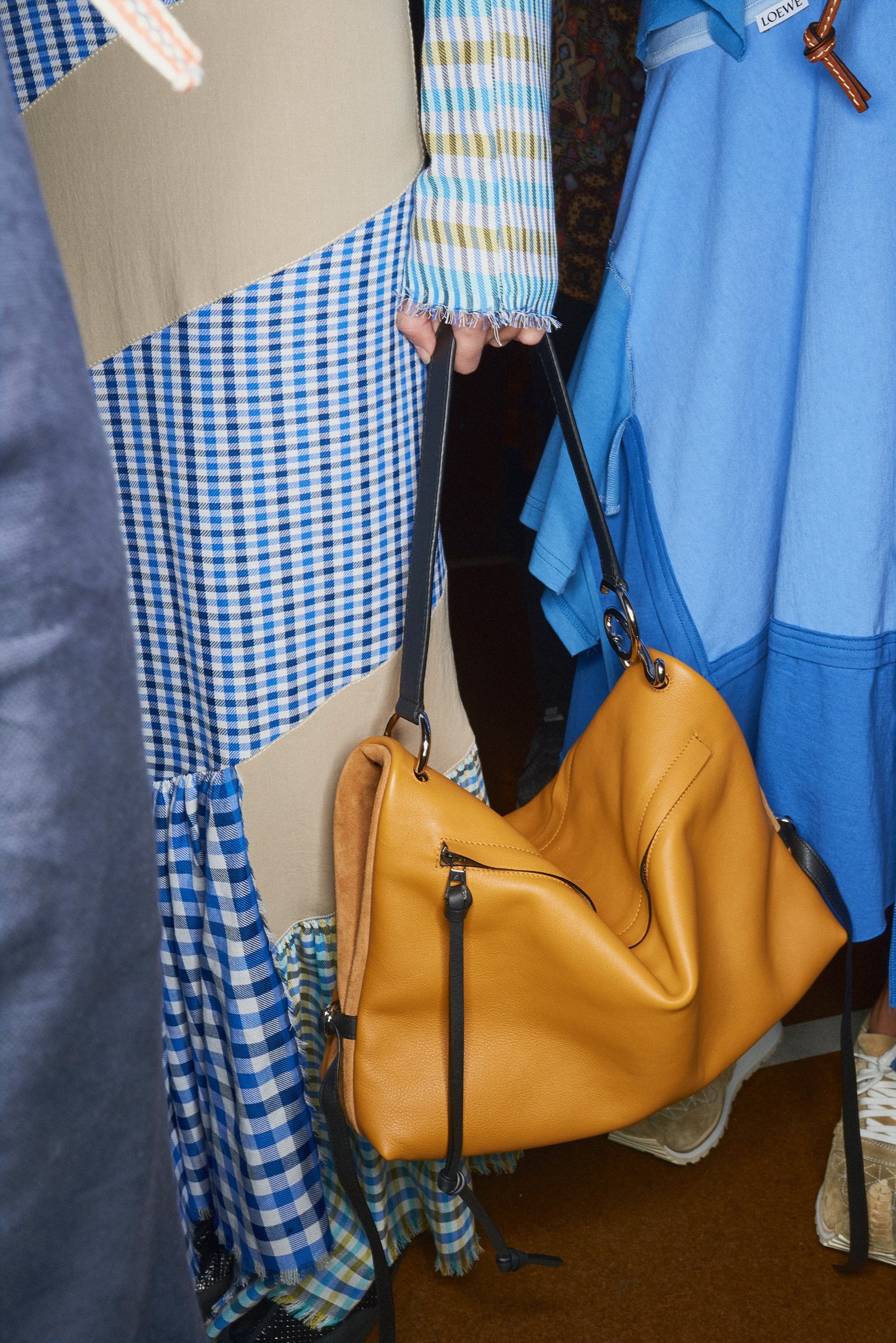

Let me explain that thinking; time is the only luxury left. It’s the only thing even the hyper-rich 0.00001 percenters can’t buy. So Anderson and Loewe are creating clothes that evoke the notion of time – time passing, times past, time taken to craft, but also to think of these ideas. And to evolve – it has been three years since Anderson’s first Loewe collection, during which time he has slowly but surely crafted an entirely fresh perception of the brand and its values. It has become something people want to invest in, that people believe in. For me, the supreme strength of Loewe is how genuine it is. How luxurious, but how true.

